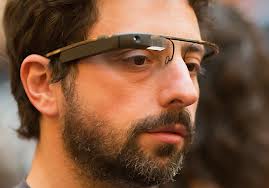If you haven't yet, you should really spend some time reading Josh Bersin's excellent piece on Forbes, 'The 9 Hottest Trends in HR Technology... and Many are Disruptive.' In the piece, Josh combines his insight into the HR and HR technology markets to offer up his view of some of the most important, and potentially impactful trends for HR and the workplace in the near and semi-near future.
Josh hits some trends that have been brewing for a few years now, (video, social, and Big Data in talent management and HR), but it is his last trend 'Watch for Wearable Computing and the Internet of Things', that interests me the most, and I wanted to touch upon briefly here.
Josh describes the potential for recruiting applications that run on wearable devices like Google Glass, (something I wrote about on the blog some time back), and a different kind of wearable device from Hitachi that monitors employee movements, activities, and interactions in the hopes of helping the organization (and the individual), 'learn' about when and with whom they are most productive, inspired, and efficient. I even blogged about a similar technology all the way back in 2011.
We all like to say that endless meetings suck the life out of us at work, but with a kind of 'work logging' device that could track the time and participants in a meeting, then perform some analysis about how much or little 'great' work got done soon after, then an organization might be able for the first time be able to 'know' the true cost of their propensity to endlessly gather around large, wooden tables.
And as I wrote about in 2012, a 'Glass' type device to help inform, monitor, and help an interviewer (or manager) adapt on the fly to interactions with candidates or employees seems to hold incredible potential for increased accuracy and productivity. Additionally, the ability of Glass (and presumably other technology), to record and immediately make available digital records of these interactions will provide a real-time capability and mechanism for in the moment feedback, coaching, and improvement.
But there is a downside to this, certainly, for the worker anyway. The loss of perceived privacy namely. While we have all come to accept the fact that while on company time and using company equipment and networks that our digital activities can be and probably are being monitored, most of us would be less willing to sign up for offline (hallways, meetings, the cafeteria), monitoring as well.
At work, we like to be able to steal away from the computers and phones and have side conversations, chats in the break room, even the occasional adult beverage or two with our peers and colleagues. The beauty of these kinds of interactions is that they are generally completely unscripted, informal, and more relaxed. Exactly the kinds of interactions that smarter people than I like Marissa Mayer talked about when she famously put a stop to remote working arrangements at Yahoo a few months back. But will these interactions be as 'free' and as valuable and productive if they are being tracked, monitored, recorded?
I do think the horse is just about out of the barn, at least on these technologies themselves. Many organizations will indeed see these kinds of wearable, always-on, always tracking, always recording devices as a simple extension of phone, network, and email monitoring that is generally accepted and expected in the workplace. Most employees have adapted to this reality by generally keeping personal, controversial, and potentially inflammatory content off of corporate devices and networks. But once the corporation extends 'monitoring' to the person, and not just the tools the person uses? Well, that is a different situation entirely.
Whether or not it takes two years or more like ten, it seems to me that we will almost certainly see more tracking, monitoring, and recording of workers of all types - from service providers out in the field, to customer service folks, to information workers at the corporate office, and who knows, maybe even to the big shots in the big offices too.
It will be really interesting when, as I first asked back in 2011, whether or not employees are going to be excited about wearing a 'workplace wire'.